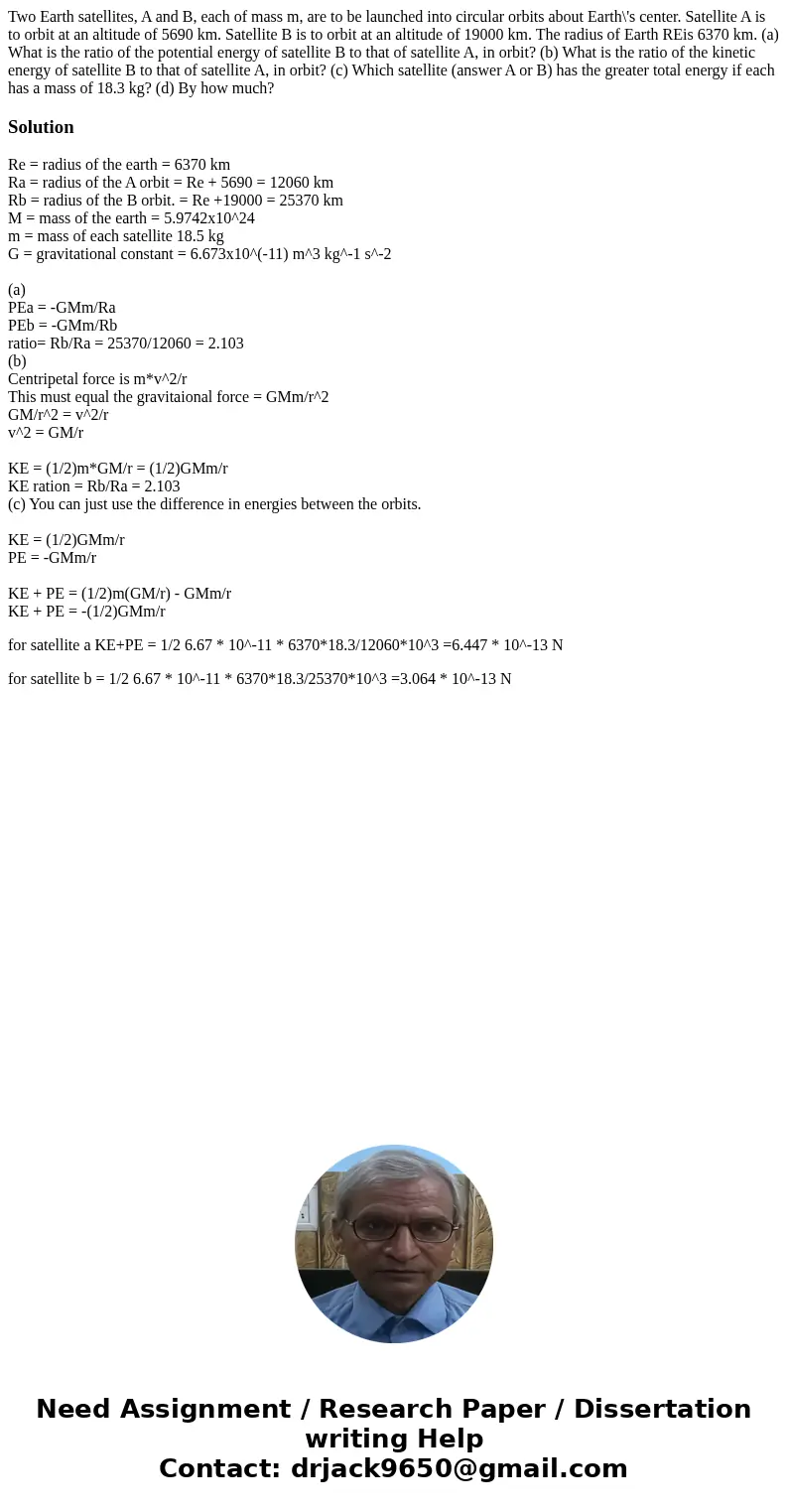Two Earth satellites A and B each of mass m are to be launch
Two Earth satellites, A and B, each of mass m, are to be launched into circular orbits about Earth\'s center. Satellite A is to orbit at an altitude of 5690 km. Satellite B is to orbit at an altitude of 19000 km. The radius of Earth REis 6370 km. (a) What is the ratio of the potential energy of satellite B to that of satellite A, in orbit? (b) What is the ratio of the kinetic energy of satellite B to that of satellite A, in orbit? (c) Which satellite (answer A or B) has the greater total energy if each has a mass of 18.3 kg? (d) By how much?
Solution
Re = radius of the earth = 6370 km
Ra = radius of the A orbit = Re + 5690 = 12060 km
Rb = radius of the B orbit. = Re +19000 = 25370 km
M = mass of the earth = 5.9742x10^24
m = mass of each satellite 18.5 kg
G = gravitational constant = 6.673x10^(-11) m^3 kg^-1 s^-2
(a)
PEa = -GMm/Ra
PEb = -GMm/Rb
ratio= Rb/Ra = 25370/12060 = 2.103
(b)
Centripetal force is m*v^2/r
This must equal the gravitaional force = GMm/r^2
GM/r^2 = v^2/r
v^2 = GM/r
KE = (1/2)m*GM/r = (1/2)GMm/r
KE ration = Rb/Ra = 2.103
(c) You can just use the difference in energies between the orbits.
KE = (1/2)GMm/r
PE = -GMm/r
KE + PE = (1/2)m(GM/r) - GMm/r
KE + PE = -(1/2)GMm/r
for satellite a KE+PE = 1/2 6.67 * 10^-11 * 6370*18.3/12060*10^3 =6.447 * 10^-13 N
for satellite b = 1/2 6.67 * 10^-11 * 6370*18.3/25370*10^3 =3.064 * 10^-13 N

 Homework Sourse
Homework Sourse